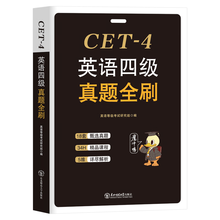I often meet people who have been good performers in their own organization but who have discovered thatthey are stuck. Because they have become so closely identified with a particular company or industry, theirskills are not perceived as being readily transferable to other settings. Measure yourself against community aswell as internal standards. Your professional association and network can assist you.
2. Create a Fallback Position
Human resource manager Carol K. works for a large public utility. Anticipating the impact of regulatorychanges in her industry, she is pursuing a diploma in alternative dispute resolution. "I know my job may bevulnerable," she said. "This way, if the worst happens, I can always hang out a shingle as a conflict mediator. "
Dont put all your eggs in one basket. If you limit yourself to one particular area or sector, you limit youropportunities, too. Today it is critical to have multiple options, multiple avenues, and multiple roles. If youonly see yourself, for example, in the role of an employee, your work options are significantly more limited thanif you understand how your skills can be applied in different types of employment relationships in different sectorsand industries.
Having a fallback position means that you can equally see yourself selling your skills as a contract worker, afreelance consultant, or a small-business owner, even if these other roles are less desirable to you than that of full-time employee. In other words, redefine the way in which you work, and your relationship to potential purchasers of your skills and knowledge, to ensure your future employability. This means developing a new mind-set.3. Know Your Key Skills
Weve all heard that in the future we will hold five to seven careers. When I discuss this in workshops, many people find it alarming. They think it means they are without substance, with no enduring value, programmed to self-destruct every few years. They fear they will be required to reinvent themselves constantly.
Actually, most people will not embarking on entirely new careers (architect becomes farmer) so much as reconfiguring existing skills and experience in new ways (architect/hobby farmer start business designing and building greenhouses).
Know your underlying or core skills. Like a childs Lego pieces, these are the building blocks that you can continually reassemble, though in slightly new configurations, as you move through your career. Identifying your key strengths and skills requires a rigorous self-assessment. Ask yourself what unique talents and special skills you bring to the table.
Develop a work identity independent of your job, defining your job title. Look at yourself as the owner of a self-managed group of skills and abilities that you can apply in a wide range of jobs and projects. 4. Prepare for Areas of Competence
In a global marketplace, many jobs come and go as quickly as changes in the stock market. Todays hottest jobs may not exist tomorrow. Some people, worried about their employability, are responding to current, much-trumpeted predictions of a severe shortage of information technology workers by enrolling in information technology courses. If you love computers, then this work represents a great choice. But dont enter a field just because you think thats where the hot jobs are; even if the work is available, it may not match well with your own skills and abilities. Start with an assessment of your own strengths and interests, then see where you may match up best in the job market.
Instead of preparing yourself for specific jobs, identify the areas where you want to contribute, whether they are technical sectors such as software design or market analysis, or nontechnical areas such as team building, leading knowledge workers, or relationship building.
......
展开










